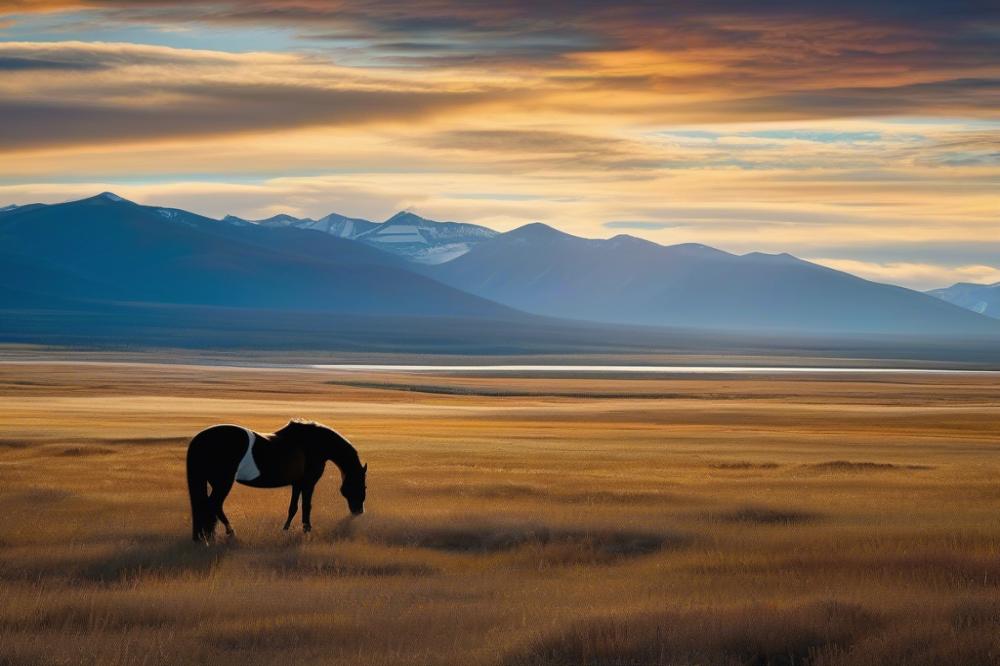horses in the artistic traditions of horses-as-status-symbols-in-ancient-egyptian-society”>Indigenous Canadian tribes
The role of horses in the lives of Indigenous Canadian tribes is profound. These magnificent animals have shaped cultures, traditions, and lifestyles for centuries. When horses arrived in North America, they brought new possibilities for travel, trade, and hunting. Their strength and beauty quickly made them sacred symbols in many communities.
artistic traditions serve as a vital outlet for expressing the deep connection between people and horses. Paintings, sculptures, and crafts often depict these animals, highlighting their significance in everyday life and spirituality. Artists capture stories of freedom and strength, weaving horses into narratives that reflect the history and identity of their tribes.
Traditions passed down through generations keep this cultural heritage alive. Younger members of the communities learn the importance of horses by engaging in art. Through creativity, they explore their roots while honoring the connection with these animals. In turn, the artistic depictions tell the world about the relationship between the tribes and horses, preserving their legacy.
Historical Context
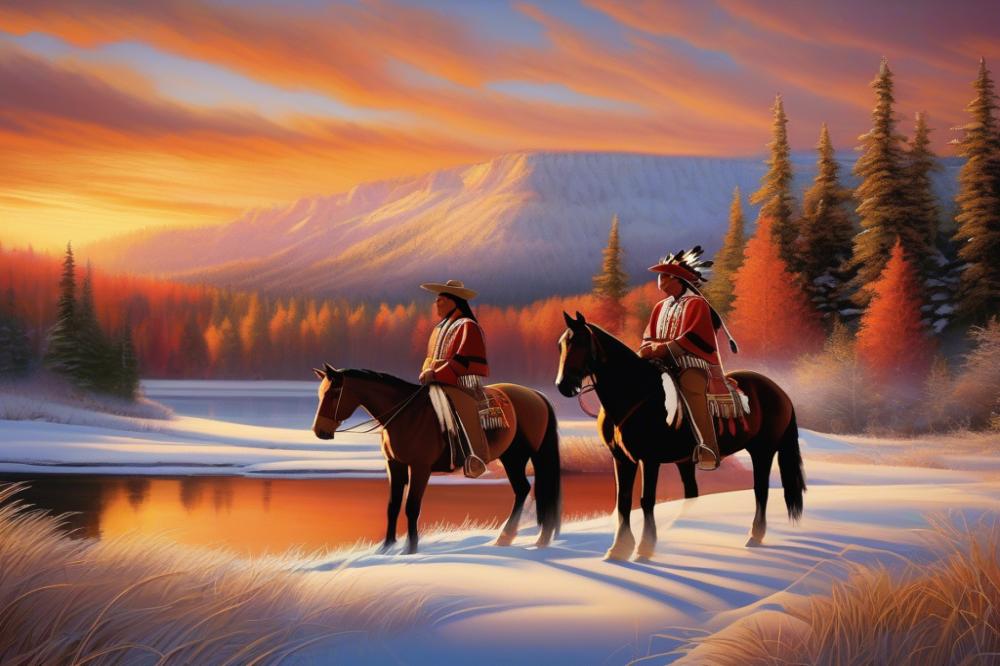
The arrival of horses in North America had a profound effect on many cultures. Spanish explorers brought horses to the continent in the 16th century. Over the next few centuries, these animals began to spread into various Indigenous communities. Initially, the horse was a foreign concept. However, its integration transformed many aspects of daily life.
Horses greatly influenced society and economy among tribes. These animals became crucial for transportation, allowing people to cover vast distances more quickly. With horses, hunting became more efficient. Hunters could pursue game faster and cover larger areas. As a result, food sources became more reliable, leading to improved diets.
Trade expanded significantly thanks to horses as well. Tribes could transport goods over longer distances. This not only increased the volume of trade but also created connections between distant groups. Relationships between tribes strengthened, fostering cultural exchanges and shared customs.
The presence of horses changed lifestyles dramatically. Many groups, once sedentary, became more mobile. Families could follow herds, which enhanced their survival. New hunting techniques developed, often centered around the capabilities of their steeds. Horses also had an impact on social status. Tribes with more horses often had greater influence among their peers.
Equine Symbolism in Native American Art
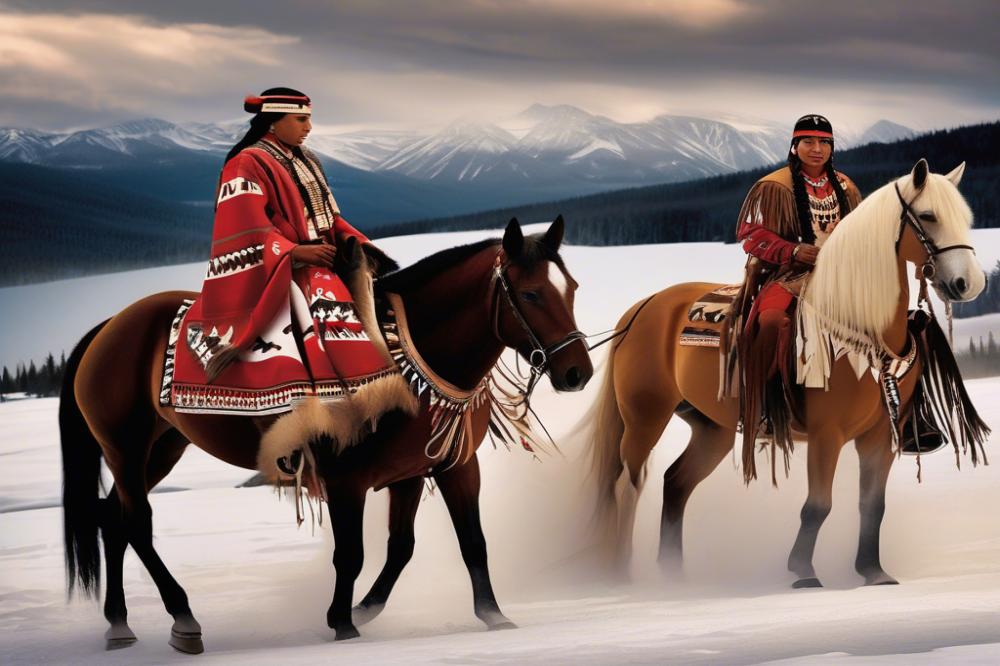
Horses hold a special place in the hearts and minds of many Indigenous cultures. They symbolize power, freedom, and spirituality. These magnificent animals transformed life for many tribes after their introduction by European colonizers. Horses became more than just a means of transportation; they represented the spirit of the people.
Artistic traditions portray equine motifs in diverse ways. In many cases, horses are depicted alongside warriors, embodying strength and courage. In other artworks, they are shown in serene landscapes, symbolizing freedom and the connection to nature. Detailed beadwork often features horses as important symbols. Paintings and carvings also include these creatures, showcasing their deep significance.
Stories passed down through generations often feature horses as key characters. These narratives illustrate bravery, adventure, and the relationship between people and the natural world. Many tribes used storytelling to impart essential lessons, with horses standing as symbols of resilience and loyalty. Children learn about their cultural heritage through these tales, reinforcing the bond with these noble animals.
In various artistic expressions, horses serve as a bridge between the physical and spiritual realms. Some Indigenous artists use horses to convey messages from ancestors or to honor the balance of life. Other artworks emphasize the powerful connection between horses and the human spirit, revealing the depth of this relationship.
Overall, horses in art reflect a vital aspect of numerous Indigenous cultures. They represent not just a means of survival, but embody ideals of power, freedom, and spiritual connection. Through these artistic expressions, the legacy of horses continues to thrive and inspire new generations.
Artistic Expressions Depicting Horses
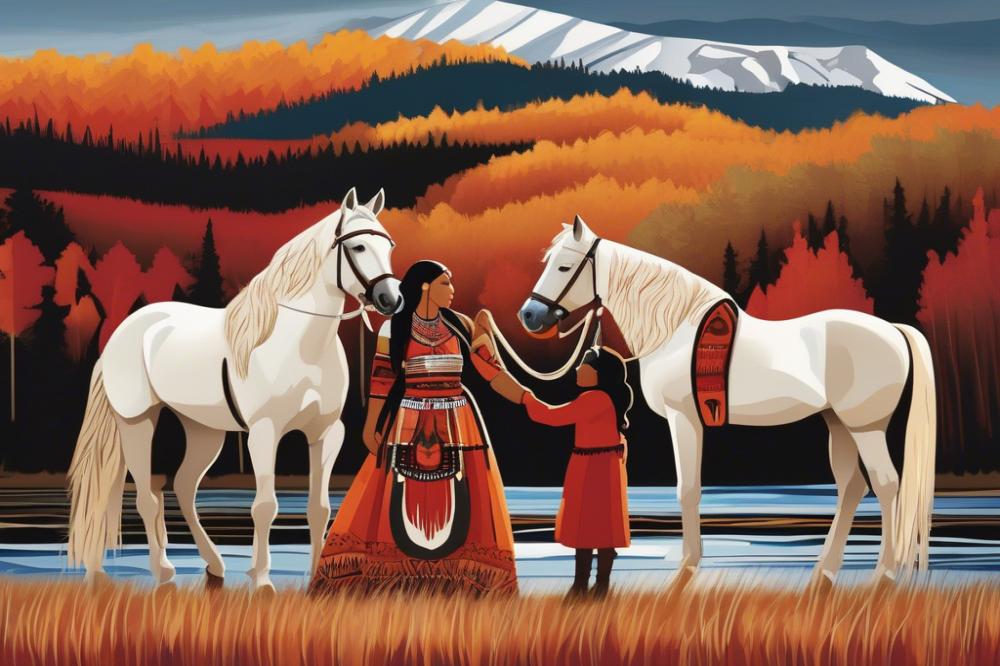
Indigenous Canadian tribes have a long history of representing horses in their art. Various artistic mediums are used to express this connection. These include painting, sculpture, and ceramic art. Each medium tells a different story and reflects cultural values. Artists often draw inspiration from the horse’s significance in their lives.
Painting stands out as a common form of expression. Many artists incorporate horses into their canvases, using vibrant colors and dynamic forms. These artworks capture the spirit and strength of the animal. Often, they depict cultural ceremonies or stories involving horses. This connection helps viewers understand the role horses played in their lives.
Sculpture also plays an important role in this artistic journey. Carvings of horses can be found in various materials like wood and stone. Such sculptures often convey a sense of movement and grace. Some represent deities or mythical figures associated with horses, blending spirituality with artistry. These sculptures are not just decorative; they carry deep meanings.
Ceramic art includes depictions of horses through pots and other creations. Artists often craft horse motifs that reflect their communities. These ceramics showcase not only aesthetic beauty but also practical use. Many pieces serve ceremonial functions, bridging the past with contemporary life. Horse imagery connects the artist to their heritage in a tangible way.
Several key artworks represent horses in Indigenous culture. These pieces often reflect daily life, tradition, and storytelling. For instance, some paintings focus on equestrian events. Others highlight the bond between humans and horses. Each piece offers insight into how horses influence values and traditions.
Traditional practices often weave equine themes into various aspects of life. Horse racing, for example, can become a central element in celebrations and gatherings. The events serve to strengthen community ties, celebrating artistry alongside athleticism. Singing, dancing, and storytelling are also integral, enriching the experience of horse-related traditions.
Artists draw from their rich history to create works that resonate with both the past and present. Each depiction reinforces the horse’s role as a symbol of freedom, strength, and pride. As these artistic expressions continue to evolve, their significance remains. They foster a deeper understanding of the rich relationship Indigenous cultures have with horses.
Community and Horses
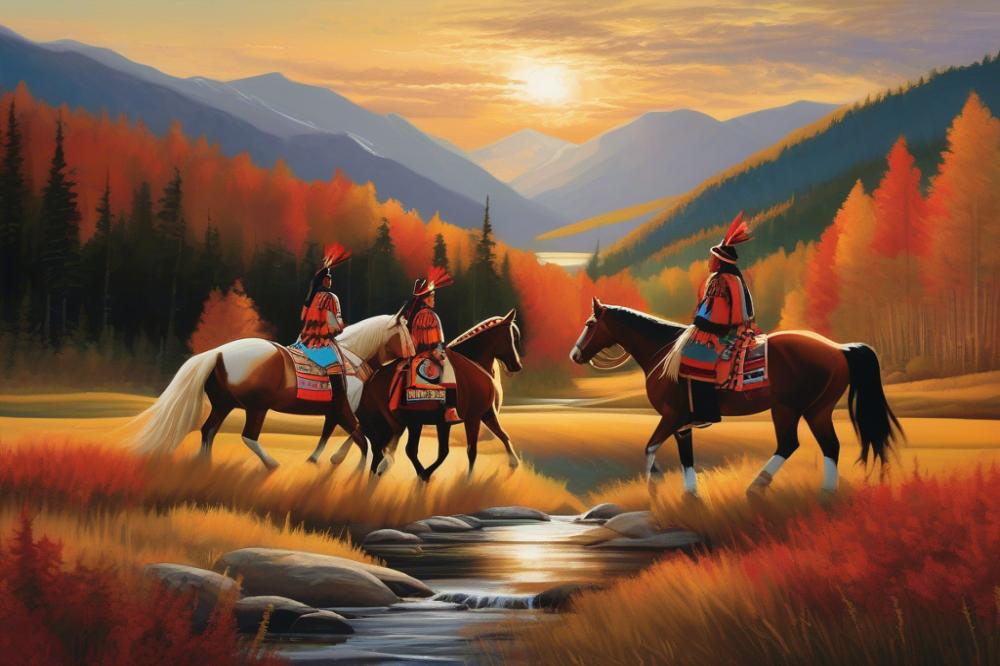
The arrival of horses marked a significant turning point for many Indigenous Canadian tribes. Horses became more than a means of transportation; they transformed community life. Sharing the responsibility of caring for these animals deepened connections between people. Communities gathered to ride together, fostering a sense of belonging.
Festivals highlight the bond between the horse and Indigenous culture. Events often feature traditional ceremonies, races, and competitions. These gatherings allow families to come together, celebrating their shared heritage. Many festivals showcase horse-related art and stories, emphasizing their importance in the collective memory.
The oral tradition holds a special place in many tribes. Stories passed down through generations often feature heroic horses and their riders. Legends of bravery and companionship create a rich cultural tapestry. Children listen closely as elders recount tales under the stars, bonding over this shared history.
Through horses, people find a way to express their identities. Skills in riding and animal care are celebrated, highlighting the connection to the land. Many communities use these skills to teach younger generations about responsibility and respect. The relationship with horses reinforces values important to tribal life.
Community events focused on horses encourage participation from everyone. Families join hands to organize races, display art, or host storytelling sessions. All ages participate, ensuring a vibrant atmosphere alive with laughter and shared joy. Gathering together creates lasting memories and strengthens cultural ties.
Horses symbolize freedom and strength within these cultures. They represent a connection to the past while inspiring pride in community identity. The bonds formed through these majestic animals enrich lives, reminding everyone of their shared heritage. This unique relationship encompasses both tradition and modern expressions of culture.
Contemporary Reflections
Current representations of horses in modern Indigenous art reveal a deep connection to tradition and identity. Artists express their views through various mediums, including painting and sculpture. In these works, horses often symbolize strength, freedom, and cultural heritage. Many creators incorporate vibrant colors and bold designs that reflect personal stories and ancestral ties.
Changes in society have influenced the evolution of artistic traditions among these tribes. As culture shifts, so too does the portrayal of horses in art. Some artists blend traditional techniques with contemporary styles. Others choose to focus on the challenges faced by Indigenous peoples today. This mix showcases how the relationship with horses adapts while remaining rooted in history.
Horses maintain their significance in contemporary Indigenous identity. They symbolize not just a connection to the land but also a way of life. Many view these animals as companions and sources of inspiration. Through art, the legacy of horses continues to resonate. This ongoing representation allows communities to express their experiences, both past and present.
Final Thoughts on the Role of Horses in Indigenous Art
Horses hold a vital place in the artistic traditions of Indigenous Canadian tribes. They are more than mere subjects; they embody deep cultural meanings. Art serves as a powerful tool, preserving the stories and values of communities over generations. Through colors, shapes, and symbols, artists convey messages that are rich in equine symbolism.
Representation of horses in various art forms reflects their role in daily life and spiritual practices. Craftsmanship around this majestic animal brings forward traditions that could otherwise fade away. Each piece not only showcases talent but also honors the past. Community members share tales through art, strengthening bonds and fostering understanding.
Art enriches cultural heritage and connects people to their history. It allows younger generations to appreciate the significance of horses in their lives. Themes of strength, freedom, and relationship emerge frequently in these artworks. Artists play a crucial role in this ongoing legacy, bridging the past and the present.
Stories told through art build a sense of unity. They invite all to reflect on the connections between humans and horses. This relationship fosters storytelling, ensuring that every generation remembers the importance of these noble creatures. As we conclude, it is clear that the role of horses extends beyond artistic expression; it weaves into the very fabric of community life and identity.

